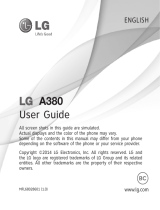
4
Settings ........................... 75
Profi les.................................75
Display .................................75
Dialing ................................75
Date and Time ......................76
Connectivity ..........................77
Call ..................................79
Phone ..................................83
Network ...............................83
Internet Profi les ....................84
Access Points .......................84
Packet Data Conn. ................84
Security ................................85
Memory Info .........................86
Restore Factory Settings........87
My Memory Card ..................88
My Images ...........................88
My Sounds ...........................88
My Videos ............................88
My games & Apps .................88
Others ..................................88
Media ............................... 89
Camera ................................89
Camcorder ...........................90
Music ..................................91
FM Radio..............................92
Voice Recorder .....................92
Ringtone Creator ...................93
Organizer ......................... 94
Alarm Clock ..........................94
Calendar ..............................94
To-Do List.............................95
Notes ..................................96
Secret Notes .........................96
Cash Book ............................96
BMI calculator ......................96
Calculator .............................97
Stopwatch ............................97
Date Finder ..........................97
Converter .............................98
World Time ...........................98
Go To ..................................98
Settings................................98
Applications ..................... 99
Web ................................100
Home ................................100
Google Search ....................101
Bookmarks .........................101
Last Web Address ...............101
Settings..............................102
Go to Address .....................103
Saved Pages ......................103
Accessories ................... 104
Trouble Shooting ............ 105
Contents


























